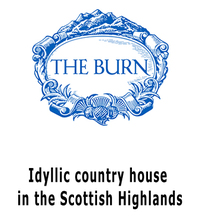Many thanks to The Burn for facilitating this camera's location and to Aberdeenshire Council for capitally funding its installation in partnership with
Esk Rivers & Fisheries Trust & District Salmon Fishery Board .The implementation of the Farson Digital webcam will greatly aid in monitoring water levels and assessing the potential risk of downstream flooding. A notable architectural marvel, the Gannochy Bridge, was completed in 1724 and spans the South Esk at an impressive height of 65 ft. It achieves this feat through a single arch with a span of 52 ft, situated at a point where the river flows through a deep gorge carved into the local red sandstone. This bridge was a remarkable endeavor for its time, financed by James Wood, a local farmer, who enlisted a mason to construct the arch while personally overseeing the construction of the parapet walls.The Highland Boundary Fault represents a significant fault zone that traverses Scotland, stretching from Arran and Helensburgh on the west coast to Stonehaven in the east. It serves as a demarcation line between two distinct physiographic and geological terrains: the Highlands and the Lowlands. In most locations, the fault is recognizable as a topographical transition. When rivers intersect this fault, they often flow through gorges, and the presence of waterfalls can impede the migration of salmon.Edzell, also known as Aigle in Scots and Eigill in Scottish Gaelic, is a village located in Angus, Scotland. Positioned 5 miles (8 km) north of Brechin, it lies alongside the River North Esk. Edzell is a planned town from the Georgian era, characterized by a broad main street and a grid system of side streets. Originally named Slateford, the village underwent a renaming in 1818, adopting the moniker Edzell after an abandoned hamlet located 1.5 miles (2.5 km) to the west. As of 2004, Edzell's population stood at 780.The initial village of Edzell was situated around the walls of the first Edzell Castle, a motte and bailey structure positioned south of the present-day castle. The existing village of Slateford underwent expansion in the early 19th century under the patronage of the Earl of Panmure. In 1818, the new parish church was constructed on the village's northern boundary, replacing the one in the former village, thus leading to the official renaming of the village as Edzell.In 1861, Queen Victoria and Prince Albert visited Edzell as part of a royal tour through Angus and Kincardineshire, only weeks prior to Albert's untimely passing. The village did not have railway connectivity until 1896, and its passenger service ceased in 1931, although there was a temporary reopening during the summer of 1938.Edzell received the esteemed Scotsman Trophy for the best kept Scottish village in the Britain in Bloom contest of 1975. The most distinctive landmark in the village is the Dalhousie Memorial Arch, spanning the main road into Edzell from the south. This arch was erected in 1887 as a commemoration of the simultaneous deaths of the 13th Earl of Dalhousie and his wife.Among the other notable buildings in the village is the Inglis Memorial Hall, a Gothic structure generously gifted to the community by Sir Robert Inglis in 1896 in memory of his father. Located approximately 1 mile north of Edzell is The Burn, a small Georgian estate originally constructed for Lord Adam Gordon between 1791 and 1796. It now operates as a charitable trust and is utilized for educational retreats.
The village is also renowned for the Rocks of Solitude walk, accessible through a distinctive blue door by the River North Esk, which gracefully meanders along the village.






